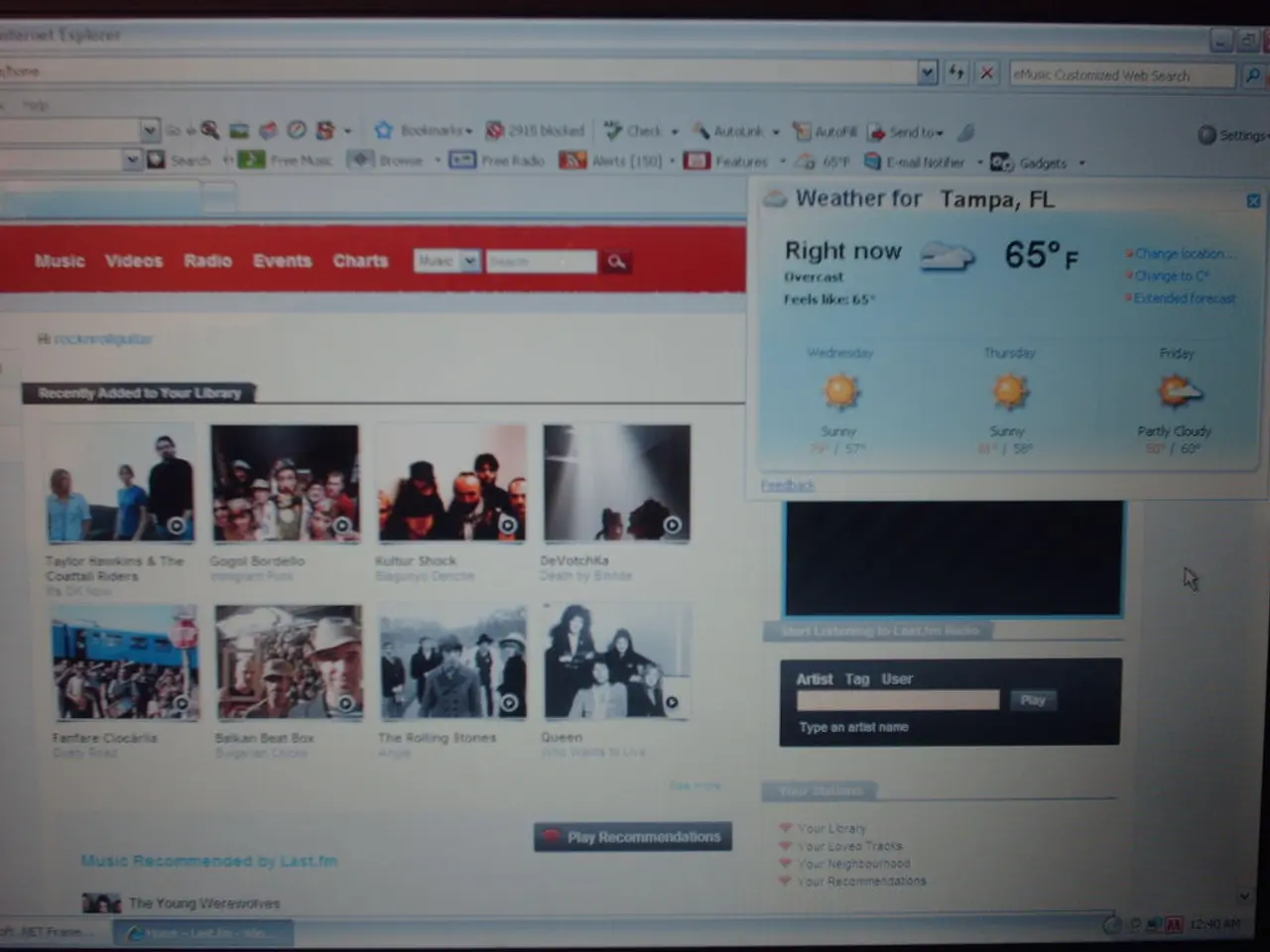The Crucial Role of Broadcast Advancements Spurred by Consumer Demands
In today's digital age, traditional broadcast viewership is on the decline, while demands for streaming platforms are on the rise. This shift is not only transforming the way we consume media but also necessitating a customer-driven approach to innovation within the broadcast industry.
This shift is crucial, as a lack of customer focus can lead to several problems that negatively impact user experience and business outcomes. Four key issues include:
1. **Weak User Experience and Satisfaction:** Prioritising technical needs over user preferences can result in interfaces that are difficult to navigate, content that is hard to find, or frequent outages and interruptions. To avoid this, media companies should regularly collect and analyse customer feedback and usage data to identify pain points and preferences, and adjust interfaces, content organisation, and service reliability accordingly.
2. **Lack of Personalization and Relevance:** Without understanding customer needs and behaviours, content may be generic and fail to engage different audience segments or respond to changing interests. To combat this, media companies should implement advanced targeting and segmentation strategies using first-party data and insights from direct interactions, rather than relying solely on outdated or irrelevant profiling.
3. **Inefficient Complaint Resolution:** Slow or inadequate responses to issues such as signal interruptions, billing errors, or outages can frustrate users and damage brand reputation. To avoid this, media companies should streamline complaint-handling processes and empower front-line staff to resolve issues quickly. Maintaining clear communication channels and proactively notifying customers about service status and resolutions is also key.
4. **Missed Opportunities for Value Creation:** Focusing on technical benchmarks or internal deadlines can cause broadcasters to miss opportunities to innovate or enhance service in ways that truly matter to the audience. To avoid this, media companies should shift their organisational mindset to prioritise customer value over internal efficiencies or short-term goals, and encourage teams to experiment with new features, formats, or content that respond to audience feedback.
By adopting a customer-centric approach, media companies can mitigate these issues and ultimately strengthen viewer engagement, satisfaction, and loyalty.
In addition to this, technology innovators are under pressure to adapt to rapid change in the broadcast industry. Scalable technology, designed with the flexibility to integrate new technologies and workflows as industry trends shift, is essential. Broadcasters should expect their technology providers to prioritise practical, purpose-built solutions, and seek partners who provide on-call, 24/7 support, offering fast, effective solutions when issues arise.
Moreover, technology partners should actively incorporate client feedback into their innovation processes. In an industry that rewards agility and creativity, broadcasters need to deliver real-time and on-demand content in an interactive manner across multiple platforms.
Ross Video, a leading technology partner, provides broadcasters with the tools and expertise to thrive in this rapidly evolving landscape. By downloading Ross Video's Technology Upgrade Guide, broadcasters can approach the modernisation of their live production technology in a practical and informed manner.
- In the digital age, traditional broadcasters are transitioning their focus towards digital content streaming platforms to cater to the rising demand.
- Media production workflows are being redesigned to accommodate UHD streaming, ensuring a high-quality viewing experience for customers.
- A customer-driven approach to innovation is crucial in the streaming media industry to prevent weak user experience and dissatisfaction.
- Broadcasters should prioritize user feedback and usage data to adjust interfaces, content organization, and service reliability to meet audience preferences.
- Personalization and relevance of content are essential for audience engagement, and this can be achieved by understanding customer needs and behaviors.
- Rapid response and efficient complaint resolution are necessary to maintain brand reputation and prevent customer frustration.
- Streamlined complaint-handling processes and empowered front-line staff can help resolve issues quickly and effectively.
- Technology innovators in the broadcast industry must adapt to rapid change and offer scalable, flexible solutions that can integrate new technologies and workflows.
- Broadcasters should expect their technology partners to provide practical, purpose-built solutions and offer on-call, 24/7 support for swift resolution of issues.
- Ross Video, as a leading technology partner, offers broadcasters the tools and expertise they need to succeed in the evolving digital streaming landscape by providing a Technology Upgrade Guide for practical and informed modernization of live production technology.




